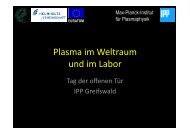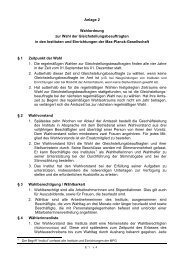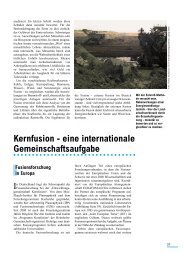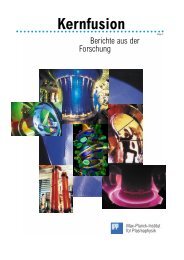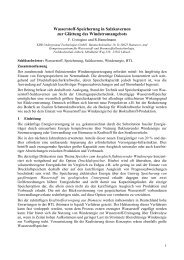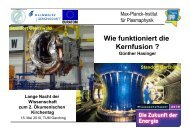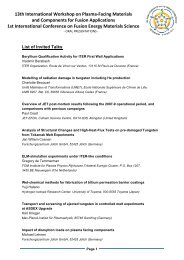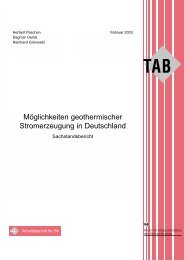IPP Annual Report 2007 - Max-Planck-Institut für Plasmaphysik ...
IPP Annual Report 2007 - Max-Planck-Institut für Plasmaphysik ...
IPP Annual Report 2007 - Max-Planck-Institut für Plasmaphysik ...
Create successful ePaper yourself
Turn your PDF publications into a flip-book with our unique Google optimized e-Paper software.
of λ/Δλ≈6800 is reached despite the compact dimensions.<br />
First results were obtained during the <strong>2007</strong> campaign allowing<br />
the extraction of Ar concentrations and ion temperatures<br />
in the central plasma with a temporal resolution of 8 ms.<br />
Dust Measurement<br />
The production of dust is an important safety issue for ITER.<br />
Investigations in AUG have been started to compare different<br />
dust measurement techniques and to quantify the dust produced<br />
in a tungsten wall device. Methods under test include a filtered<br />
vacuum collection technique, Si wafer collectors, an in-situ<br />
monitor developed by PPPL and a fast visible camera with a<br />
tangential view. First investigations show spheres of tungsten<br />
with a typical diameter of 1 μm. With a frame rate of 20 kHz,<br />
the fast camera can produced 8 GB of data during one discharge.<br />
Up to now only manual data evaluation has been done.<br />
Typical speeds of 100 m/s are observed for dust particles.<br />
ITER Core Charge Exchange System<br />
Simultaneous observations of charge exchange (CX) transitions<br />
from Ar XVI, XVII and XVIII were obtained in AUG<br />
H-mode plasmas to provide experimental validation of new<br />
fundamental CX cross-sections for Ar. In addition, the influence<br />
of W I and W II line intensities on ITER CX spectra<br />
has been calculated. Using a simple model for W sources, it<br />
is calculated that the CX-lines from C VI and N VII are<br />
unperturbed while the Be IV and He II spectrum has to deal<br />
with only two W I lines. The Ne X and Ar XVIII CX-lines<br />
suffer from several W I lines and therefore may not be suitable<br />
for ion temperature measurements, unless the lines of<br />
sight are chosen with great care.<br />
ITER Design Review<br />
Operating Scenarios for ITER (Current Rise and Current Decay)<br />
In order to achieve the range of scenarios foreseen for ITER,<br />
it is necessary to access a range of q-profiles at the start of the<br />
burn phase. For the ITER Design Review, experimental data<br />
from ASDEX Upgrade have been supplied for two cases.<br />
The first case is based on a dataset of 84 Ohmic pulses with<br />
q 95




